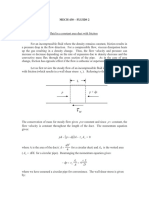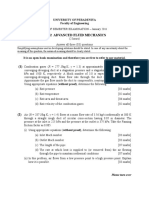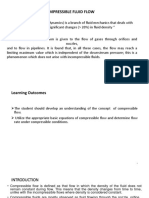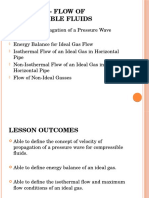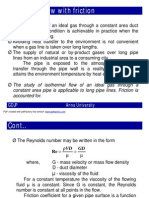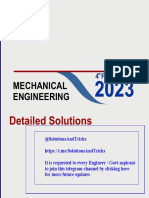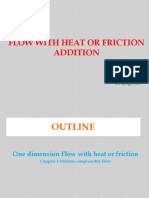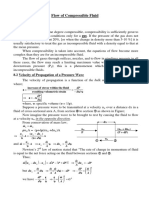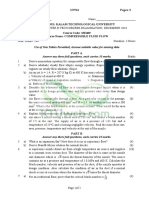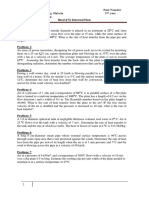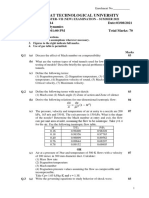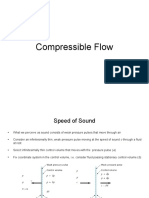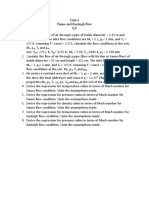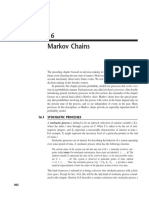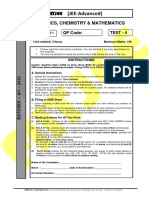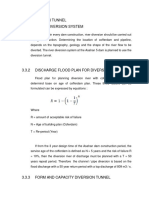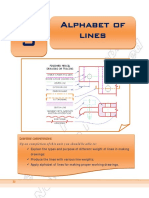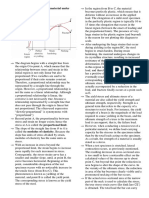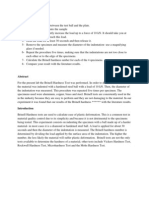0% found this document useful (0 votes)
34 views17 pagesCompressibleFlow Part01 Set01
The document discusses the steady, quasi one-dimensional, isothermal, compressible flow of an ideal gas in a constant area duct with wall friction, introducing key concepts such as the Mach number, mass flow rate, and shear stress. It presents differential equations governing the flow and provides design equations relating pressure and Mach number at different points along the duct. The equations include terms for friction factor and density, emphasizing the relationship between pressure, density, and flow velocity in compressible fluid dynamics.
Uploaded by
umromostafa7Copyright
© © All Rights Reserved
We take content rights seriously. If you suspect this is your content, claim it here.
Available Formats
Download as PDF, TXT or read online on Scribd
0% found this document useful (0 votes)
34 views17 pagesCompressibleFlow Part01 Set01
The document discusses the steady, quasi one-dimensional, isothermal, compressible flow of an ideal gas in a constant area duct with wall friction, introducing key concepts such as the Mach number, mass flow rate, and shear stress. It presents differential equations governing the flow and provides design equations relating pressure and Mach number at different points along the duct. The equations include terms for friction factor and density, emphasizing the relationship between pressure, density, and flow velocity in compressible fluid dynamics.
Uploaded by
umromostafa7Copyright
© © All Rights Reserved
We take content rights seriously. If you suspect this is your content, claim it here.
Available Formats
Download as PDF, TXT or read online on Scribd
/ 17





